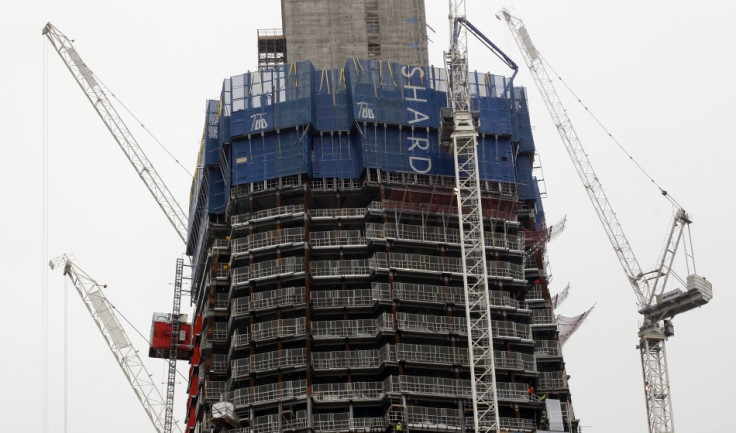Sterling Hits 2012 Against the Dollar After Positive UK Construction, Manufacturing Data

Sterling hit its highest rate against the dollar this year after glowing construction data from the UK economy, another signal indicating the country will avoid recession and find a path to economic recovery.
Construction activity increased for two consecutive months, boosted by good weather in February and March, business confidence is at a new high, and employment in the building sector is up, according to construction Purchasing Managers' Index (PMI) data from Markit and the Chartered Institute of Purchasing and Supply (CIPS).
However rising oil prices have pushed up the cost of raw materials.
The pound rose to its highest level against the dollar this year following the relase, trading at 1.6044 cents US by mid-day London time.
"Driven by stronger growth in activity in the commercial and civil engineering sectors and positive sounds from customers at the end of what has been a much brighter first quarter for construction, the modest rise in employment shows that companies are now starting to develop an appetite for expansion," David Noble, CIPS chief executive, said.
The Construction PMI figure rose to 56.7 in March from 54.3 in February - the sharpest rise in 21 months.
There was growth in the commercial, housing, and civil-engineering sub-sectors.
Construction companies are also more positive in their outlook for the sector, with business confidence at a 22-month high.
New business saw a "substantial rise", taking it to six-months of consecutive growth and purchasing activity rose at its fastest pace for four years.
Rising employment in the industry was fuelled by increasing output and new orders, though the number of jobs being created was described as "modest".
"The good weather appears to have led to a surge in demand for construction projects in March, adding to the recent flow of good news which suggests the economy will have skirted a recession," Chris Williamson, chief economist at Markit, said.
"Looking ahead, the lack of big new projects such as Crossrail and the Olympics means expectations about the year ahead continued to run well below the pre-crisis peaks, but business confidence nevertheless reached the highest for nearly two years, driven up by expectations of increases in new order intakes and improving client optimism.
"The particularly encouraging news is that the improvement in confidence is generating more jobs, with employment rising modestly."
UK Construction Data Adds to Manufacturing Hopes
A boost in the construction sector follows other good news from the manufacturing sector.
The Markit/CIPS manufacturing PMI figure rose to 52.1 in March - a ten month high.
This is up on February's 51.5 index figure.
"UK manufacturing has made a brighter than expected start to 2012, with PMI data pointing to output growth of around 0.3% in the first quarter," Rob Dobson, senior economist at Markit, said.
"This is obviously nowhere near a strong pace, but it is at least sufficient to prevent the sector from remaining a drag on broader GDP growth."
The Office for National Statistics (ONS) recently revised down its UK growth figures for the last quarter of 2011 from a 0.2 percent contraction to 0.3 percent, reigniting fears that Britain will tumble into a double-dip recession.
However, the latest data on the early months of 2012 is suggesting that the UK economy is expanding again and will see a bounce-back in the second half of the year.
© Copyright IBTimes 2024. All rights reserved.






